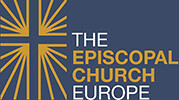Behind These Masks
“Will we have to wear masks?”
The time is nearing that our churches will be able to open for worship. It will not happen everywhere at once; it will happen at different times in different places. But even when it happens, one thing is already clear: We are not going back to the same church we left before the pandemic changed everything.
So many questions have arisen in this moment—but the one I hear most often is, “Will we have to wear masks?”
It is hard not to sense a bit of irony, perhaps even poetic justice, in the sudden wisdom of wearing masks. There is even a Christian affirmation in the reasons we are taught we should do this; a mask will not protect us from others, but it may help protect others from us, especially if we have unknowingly become infected with the virus—and that is an act of Christian care.
Yet of course, we have for years feared masks. We have been suspicious of the motives and loyalties of those who wear them—especially when they are the veils of faithful women in Muslim communities.
Americans of a certain age will remember reading in high school Nathaniel Hawthorne’s short story “The Minister’s Black Veil.” In that unsettling narrative, the Reverend Mr. Hooper, the parson of Milford, appears one Sunday morning—and, thence on, for the rest of his life—with a black veil shrouding his face. His congregation wonders about it; they speculate that he has gone mad, that he is hiding something about his own secret sins. Over the months and years that follow, they come to see in his veil a signification of their own darkness, which they come to confront more fully. Paradoxically, he becomes more effective in his ministry; seekers come to him, penitent sinners seek absolution from him, his influence grows. Yet he loses his fiancée over his choice to remain behind his mask; and finally he dies beneath it.
Hawthorne causes his readers to question—what are the veils we live behind, that we wear to obscure our true selves from those we share this life with?
I am troubled by the thought of any of us having to appear in church obscured by our masks. I acknowledge, however, the possibility that doing so may be necessary. I do not want to be a modern-day rendition of Pastor Hooper, and I doubt many of my colleagues in ministry do as well.
But there is something gently instructive here, caught up in just the reason why this practice is recommended to us. As Hawthorne intimated, the veil is less about protecting us from others than it is about shielding others from us. By his example, Hawthorne’s pastor was posing a question to the faithful people in his community—what are you seeking to hide from others, or from God, in order to make your way through life? Can one live with integrity behind such a mask?
In our moment, we set a different example. De we care enough about those we share this life with to obscure ourselves, if that might help protect them? Would we put vanity before community? Could we live with integrity in that way?
In his beautiful retelling of the Cupid and Psyche myth, C. S. Lewis places this plea on the lips of his narrator: “How can [the gods] meet us till we have faces?” We fear that behind these masks we will be lost to the world—to those we love, to our community, even to God. But nothing has the power to do that—as Saint Paul taught the Romans. Neither death, nor life, nor angels, nor rulers—nor viruses, nor masks, nor fear, nor distance—can separate us from the love of God. That reality is happening, in all places and at the same time—now, in Easter. No matter what.
Blessings,
Mark
The Right Reverend Mark D. W. Edington
Bishop in Charge
Convocation of Episcopal Churches in Europe

Comments
Login/Register to leave a comment